Ampel plants occupy a special place in indoor floriculture. Green pendant balls enchant the eye, and if not blooming, they become an exquisite decoration of any interior. Ampelic indoor plants decide to grow only experienced flower growers, since caring for them is quite complicated, therefore, after reading the names, descriptions and photos of such plants, do not rush to buy them - first you need to study the features of flower care.
Content
Features ampel room colors
Ampel flowers are especially popular among florists and florists. Due to the increased branching, balls and other intricate figures are formed from them. These flowers are indispensable details of a modern interior. With their help, decorate the interiors of residential premises, offices, halls. Ampels adorn the facades of buildings, balconies, terraces.
The lack of trim leads to a rapid loss of decorativeness. Flowers look neglected, groomed. In addition, ampels are prone to strong branching. Without timely pruning, the inner shoots are in the shadow of the side stems. They suffer from a lack of light and oxygen, which dries out.
The ampel group includes a variety of plants. Among them, one can find flowering, ornamental-deciduous plants and even succulent cacti.
Names of flowering ampelous plants with photos
Some ampelous plant species are valued for their flowers or fruits. These include begonia, hoya, fuchsia, jasmine, nerter.
Blooming ampel begonia
Blooming ampel begonia is a herbaceous perennial belonging to the Begoniaceae family. The plant exists in the form of a bush reaching half a meter. This type of begonia is classified by the color of the petals:
- Pink;
- White;
- Red;
- Orange
- Yellow;
- Terracotta.
The flower is characterized by flowering shoots with bright green glossy leaves. The shape of the plate resembles grape leaves.
Flowering occurs in the warm season. Inflorescences are differentiated into male and female. Men's have a terry form, women's - simple. As a rule, 2 flowers come out of one leaf sinus: simple and double. The lack of terry indicates improper care of the plant.
Hoya
Hoya - evergreen shrubs and vines from the Kutrovy family. The people call the flower Ivy Wax. Today, there are such types of plants:
- Fleshy (Wax);
- Beautiful;
- Multiflora (Multiflora);
- Majestic;
- Lacunose (Concave).
Young shoots do not grow leaves. Fresh vines have a purple hue. As they grow older, the shoots turn green, then lignify. Leaves appear on such shoots.
Leaf plates oval with a pointed edge. Hoya leaves are fleshy. Young leaflets have a glossy surface. Over time, they become dull.
Inflorescences are collected by umbrellas.They are located on stem branches. Externally, the flowers resemble stars. Color can be both monophonic and two-tone. The color of the inflorescences is represented by white, red, yellow and shades of pink.
Fuchsia
Fuchsia is a perennial tree-like or shrubby plant in the Cyprus family. To date, these types of plants are known:
- Bolivian
- Bright red;
- Brilliant;
- Magellan;
- Small-leaved;
- Panicled;
- Sparkling;
- Three leafed.
Fuchsia leaves are located opposite on flexible shoots. They have an oval-lanceolate shape with a pointed edge. Some types of casting are serrated. Depending on the species, the leaves have a green or reddish color.
The inflorescence consists of a calyx and corolla with curved edges. Stamens are elongated. Flowers can be simple and terry, of various colors.
Jasmine
Jasmine is creepers or shrubs from the Olive family. Distinguish between evergreen and leaf-dropping species of jasmine. The people call the flower Jasmine Real. He is often confused with mock-up. The following types of jasmine are grown in indoor floriculture:
- Bis;
- Mountainflower;
- Large flowered;
- Drug;
- Multi-flowered;
- Low;
- Flap;
- Sambac (Arabian);
- Superfine (Multi-flowered).
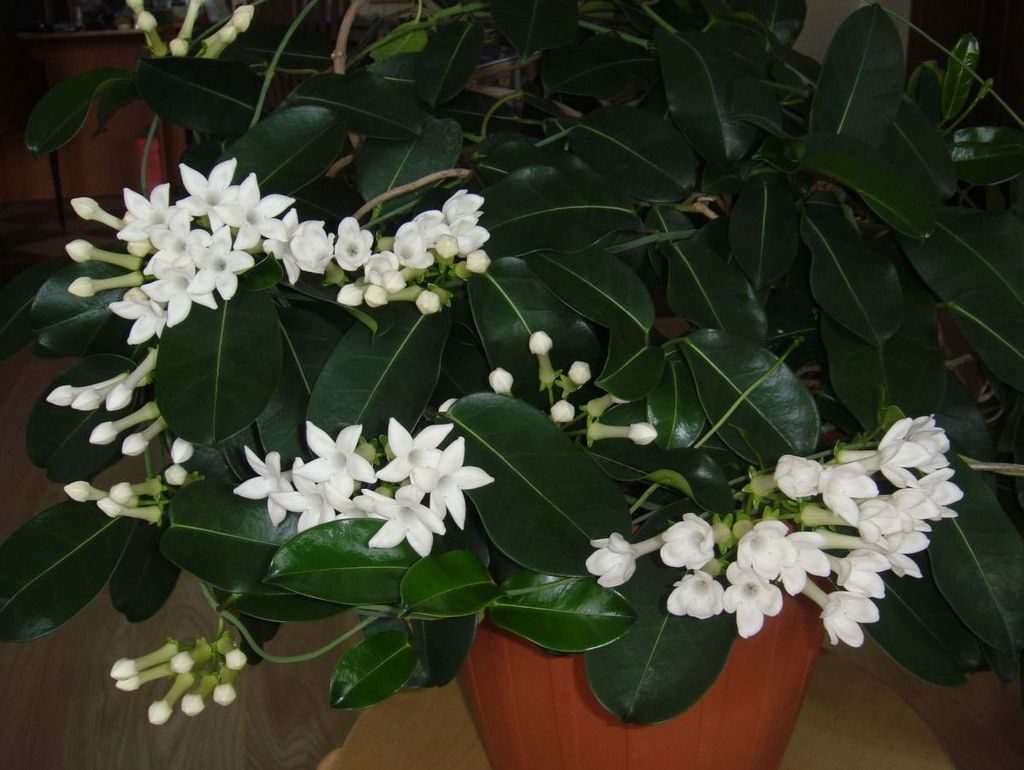
The flower produces thin shoots, which eventually lignify at the base. Jasmine leaves have a triple or pinnate shape. Depending on the species, they grow alternately or opposite.
Flowers are collected by thyroid inflorescences. They can be located on the tops of the shoots and on the sides. Flowers grow singly or with umbrellas. The inflorescence consists of a corolla, tube and pharynx. The color of flowers can be represented by white, yellow and pink.
Nerter
Nertera is a grassy perennial from the Marenov family. Nertera refers to creeping flowers. The plant is popularly called Coral Moss. There are such types of flower:
- Granadensis (Granada);
- Pressed;
- Balfura
- Ciliary;
- Cunningham.
The flower has oval leaves of bright green color. The surface of the plates is shiny. Nerter blooms in late spring. Inflorescences are located singly. White petals are combined with a greenish corolla.
Nerter’s decorative value lies in its berries. After flowering, round fleshy fruits up to 1 cm in diameter appear on the bush. Fruits can have yellow, orange or red color.
Ampel Succulents
Succulents are called plants that are able to accumulate moisture in reserve. As a rule, such flowers are very hardy and resilient.
Ripsalis
Ripsalis is an epiphytic shrub of the Cactus family. It is also called Prutovik. More than 50 species of flower are known. The most common are the following types:
- Tsereuskula;
- Pilocarp;
- Bactifer;
- Capilliformis;
- Mesembryantemoid.
Ripsalis is characterized by abundant branching and the presence of aerial roots on the shoots. This type of cactus is distinguished by the absence of thorns. Instead, a bristly fringe eats on the surface of the shoots. Depending on the type of shoots, they can have a rounded, ribbed, leaf-shaped, flat shape. All species have drooping stems.
Flowering occurs in late winter or early spring. Flowers can be located both on the tips of the shoots, and on the entire surface of the stems. The flowers are small, white or pale pink.
Zygocactus
Zygocactus is an epiphyte belonging to the Cactus family. Known under the names Rozhdestvennik, Decembrist, Christmas Cactus and others. There are several types of zygocactus:
- Buckley
- Exotic;
- Kautsky;
- Opuntia;
- Truncated.
The shoots are flat, jointed, bare. They are characterized by strong branching. On the edge of the members are notches.The shoots are painted in a calm shade of green.
Inflorescences are zygomorphic. They are located at the tips of the shoots. Depending on the species, they can have a bright pink, orange, white, red, purple color.
Lash-shaped aporocactus
The braided aporocactus belongs to the genus Aporocactus, the Cactus family. The plant is also known as the Dizocactus sclera.
In the first year of life, the stalks of the laciform aporocactus grow exclusively upward. As they grow older, the flower slowly lowers them. Shoots become flowing and sag.

Green stems are covered with central and radial spines. Spikes are thin, bristly. They can be represented in shades of yellow, red and brown.
The braided aporocactus is a flowering plant. Flowering occurs abundantly. Inflorescences form on the side of the shoots. Petals are raspberry colored.
Decorative foliage ampelous indoor flowers
Some ampoule indoor flowers are appreciated by leaves. An interesting fact is that many of them are flowering plants.
Tradescantia
Tradescantia is a grassy perennial of the Commeline family. It has a rich species diversity. The following types of plants are considered the most popular:
- Anderson;
- Virginia;
- Blossfeld;
- White-flowered (Tricolor, Uridis);
- Hairy;
- Zebroid (Hanging);
- Scaphoid;
- Motley;
- Riverside.
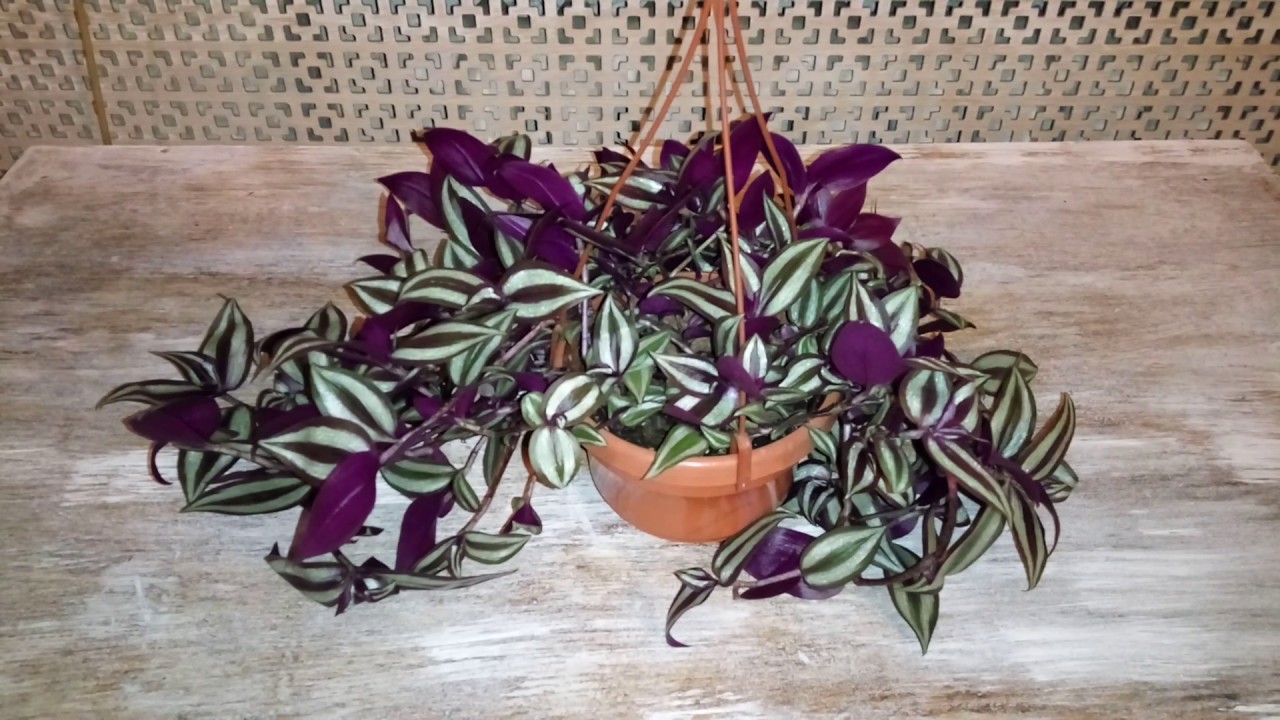
Creeping shoots are able to take root on the surface of the soil. The decorative value of the flower is represented by leaves. Depending on the species, they can have an ovoid, lanceolate, elliptical shape. The plates always grow alternately. The color is diverse: shades of green, white, purple, pink. Most species have 2 or 3 shades in color, but there are also monophonic representatives of the tradescantia.
Inflorescences are located in the leaf sinuses or on the tops of the shoots. The flowers are small.
Asparagus
Asparagus, or Asparagus, is a perennial belonging to the Asparagus family. It can be a shrub, grass and vine. There are such types of flower:
- Sprenger (densely flowered, Ethiopian);
- The thinnest;
- Asparagus (Asparagus);
- Crescent;
- Cirrus (Bristly);
- Ordinary (Asparagus chemist's, Asparagus officinalis);
- Meyer;
- Racemose;
- Medeoloiddes.
Stems are prone to strong branching. On them are numerous bundles of needle-shaped shoots. Many gardeners experience difficulties after pruning a flower. The clipped shoot does not branch, like most ampelous plants, but freezes. New shoots appear only from the basal zone.
The leaves are small. Often have flakes or spikes on the surface of the plates. The flowers are small. They are collected by racemose or thyroid inflorescences in the leaf sinuses. Flowers are divided by gender.
Ivy
Ivy is an evergreen shrub from the Araliaceae family. In indoor floriculture, the following types of ivy are used:
- Ordinary (varieties Hummingbird, Eve, Mona Lisa, Anniversary, Harald);
- Kolkhid (varieties Dentata Variegada, Salfer Haat, Aboresens);
- Canary (varieties Glory de Marengo, Striata, Golden leaf, Brigitte);
- Pastukhov.
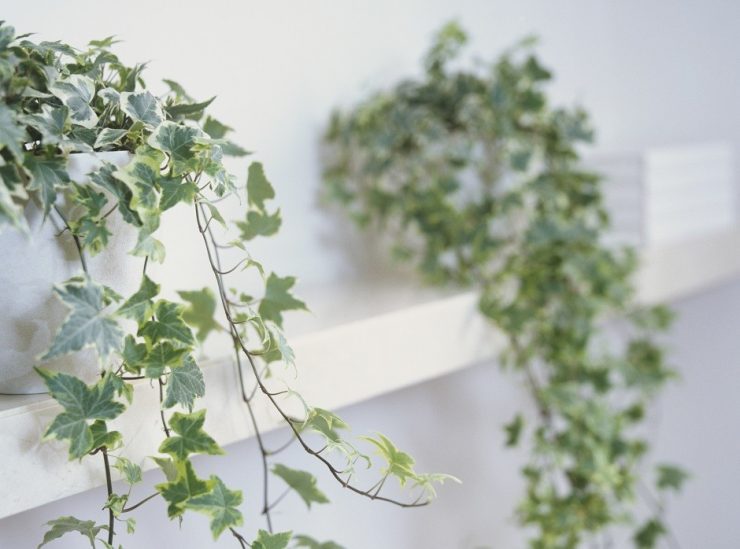
The stems are creeping, tenacious. On them are leaves with dense skin. Non-blooming species have dark green lobate plates. Blooming species are characterized by leaves of light shades of green of various shapes.
Flowers are collected in apical inflorescences of a racemose, thyroid, or capitate form. Bract in ivy is weak. Plant flowers do not represent aesthetic value.
Creeping ficus
Creeping ficus is a climbing plant, a shrub of their Mulberry family. The flower is equipped with creeping shoots, on the inner surface of which are suckers. With the help of its shoots, the plant rests on almost any surface, it can climb into any cracks.Due to aerial roots, the flower can take root in the soil of the adjacent pot and force the plant out.
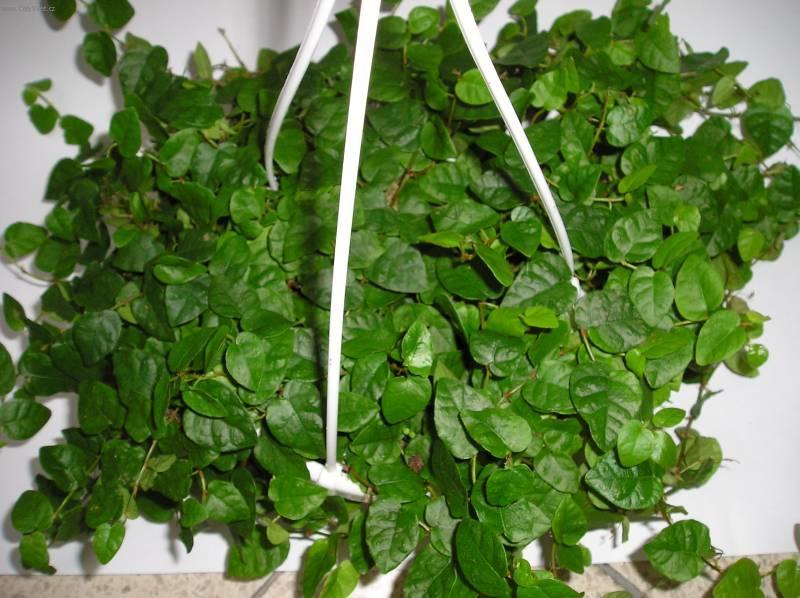
Leaf plates are heart shaped. The surface is rough, wrinkled. A mesh pattern is clearly visible on the surface.
Inflorescences are located in the axils of the leaves. Plant flowers have no decorative value.
Common Growing Questions
The group of ampels includes completely different indoor flowers: from decorative-leafy and flowering representatives to weaving cacti. Ampels differ from other plants with a tendency to branching. Caring for them provides for mandatory periodic pruning.

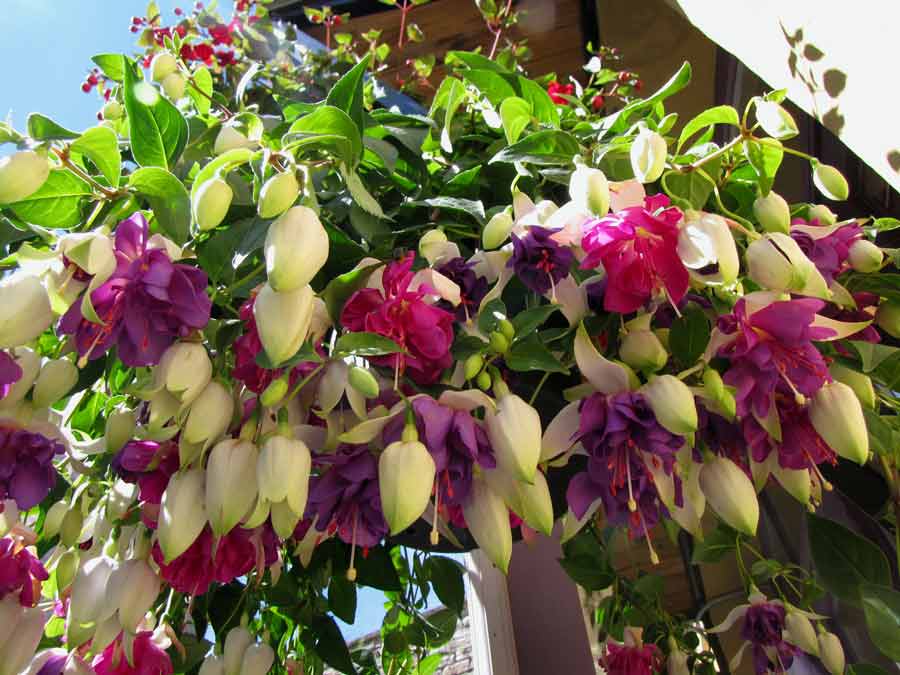
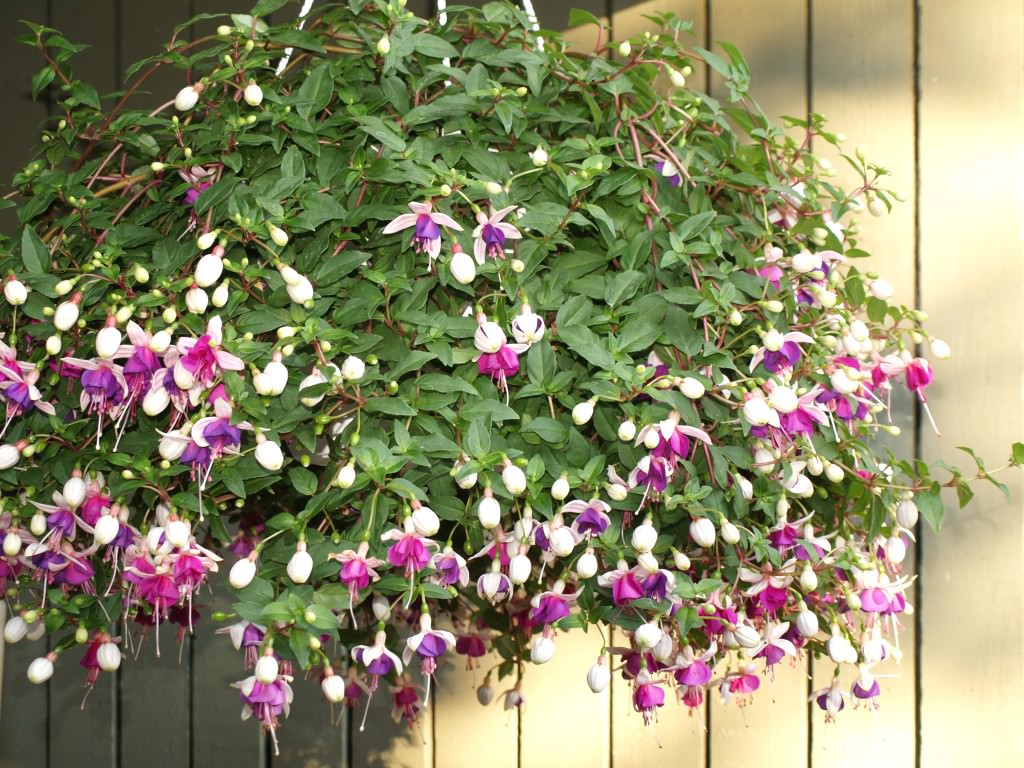
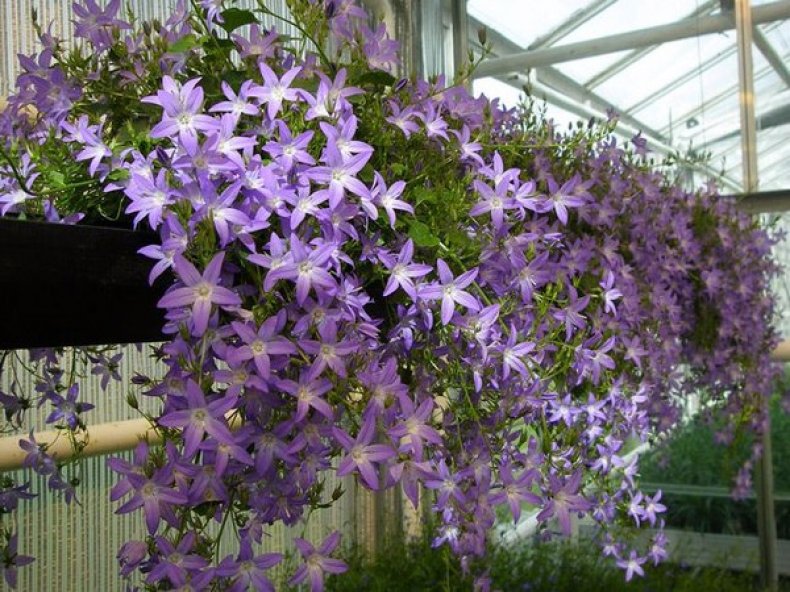
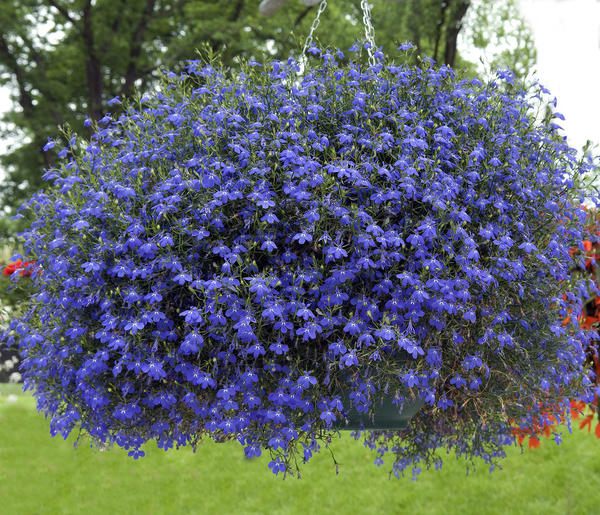
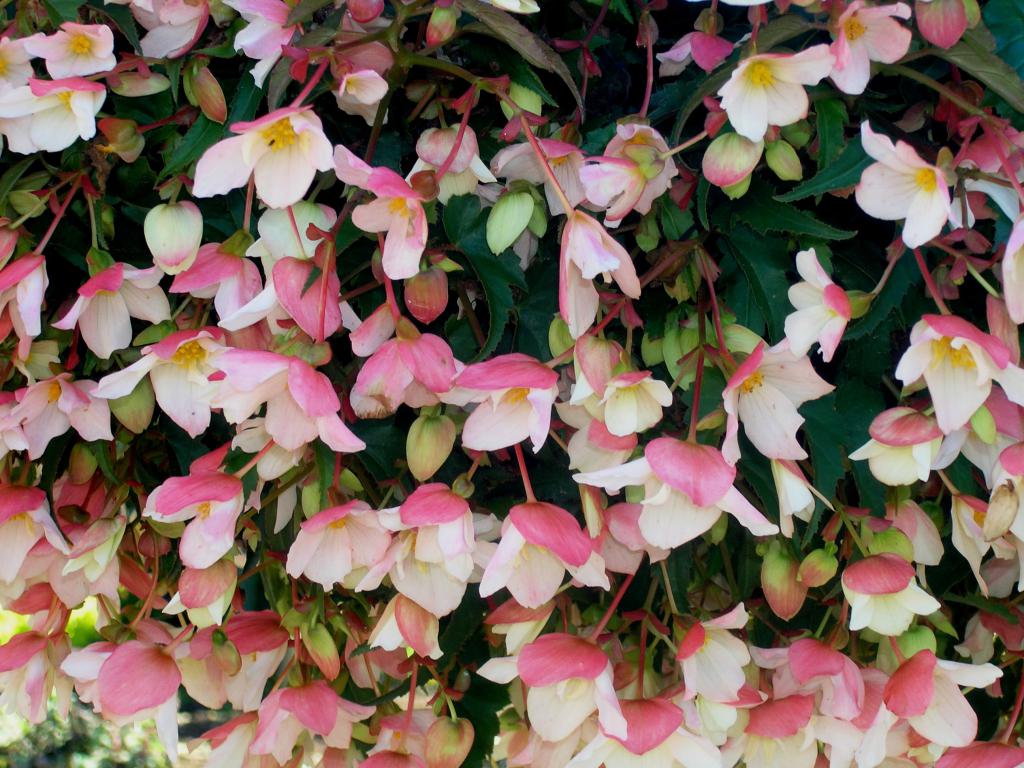

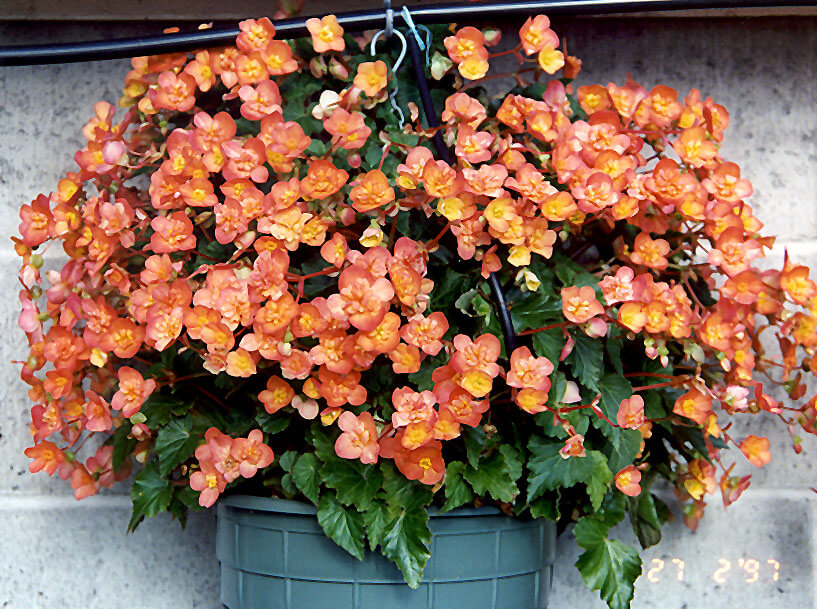
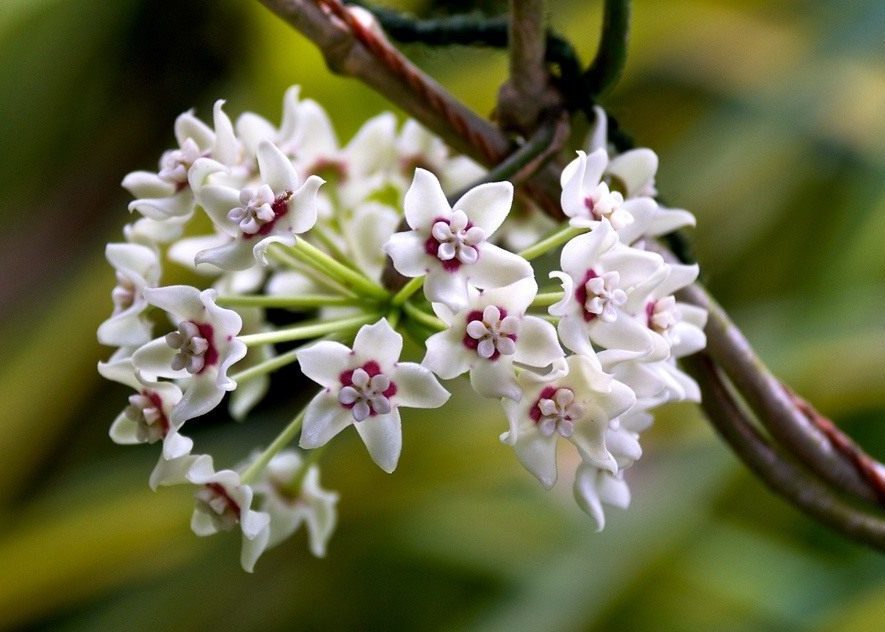
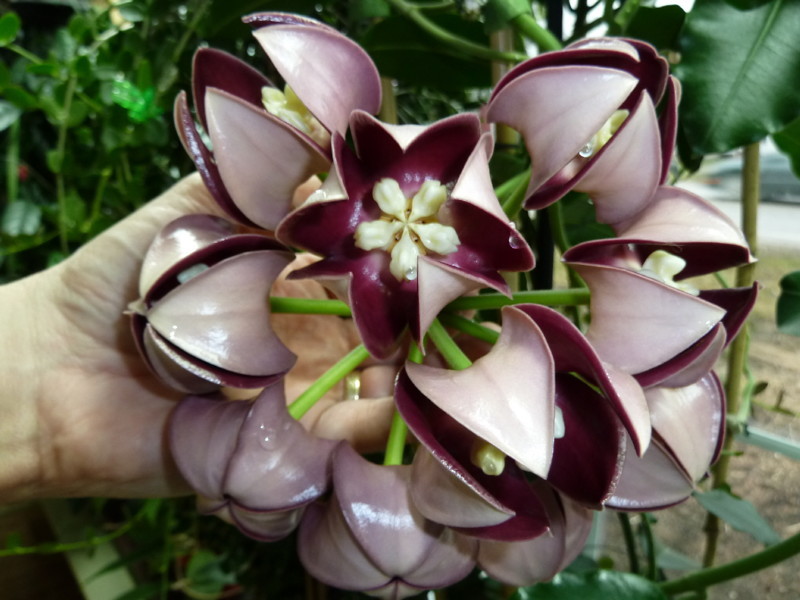
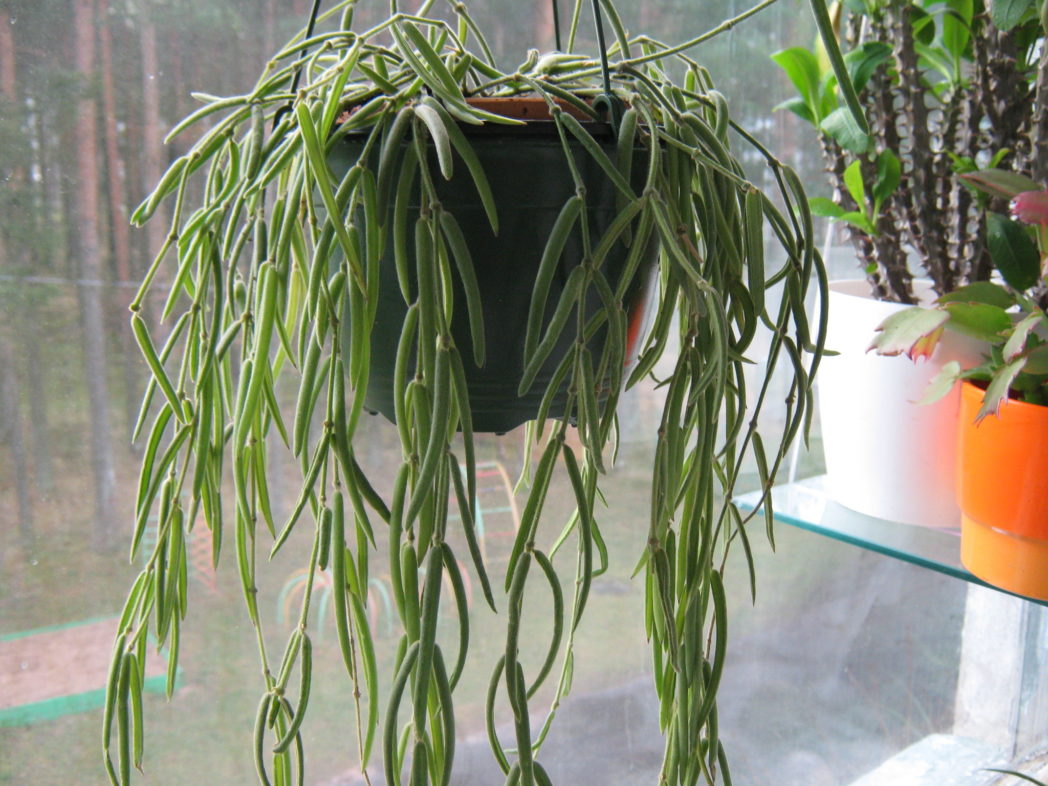
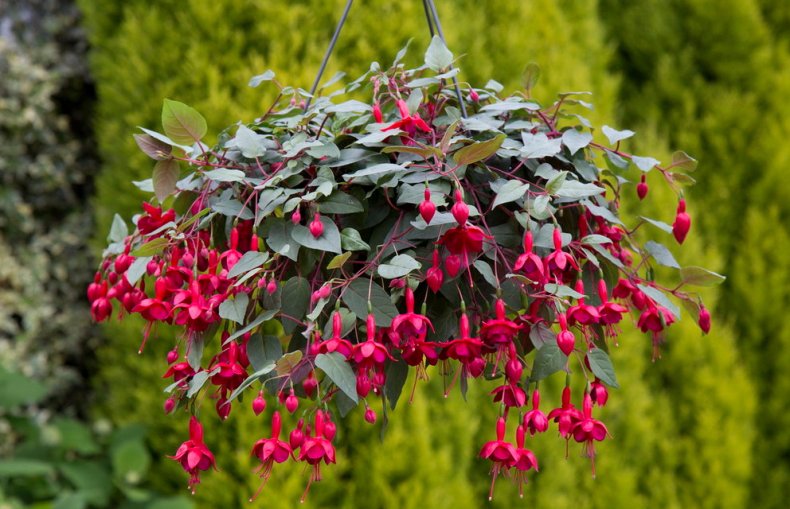
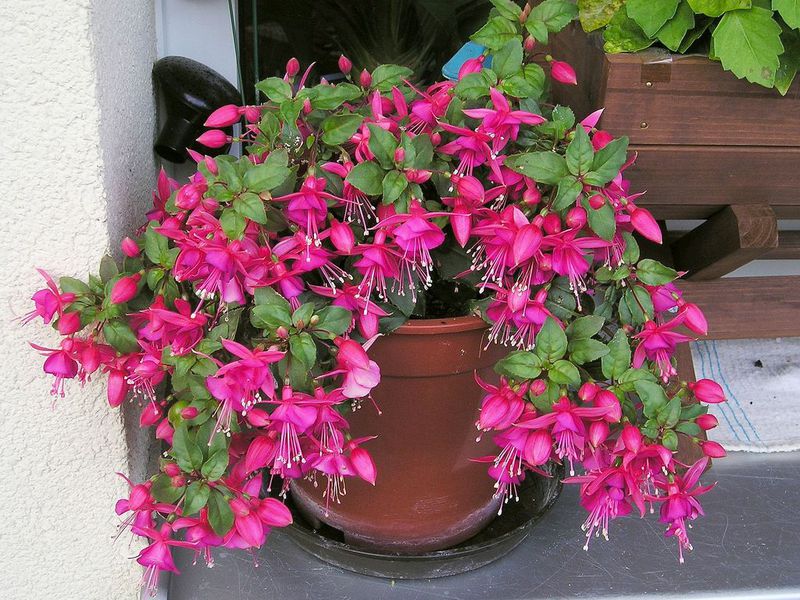
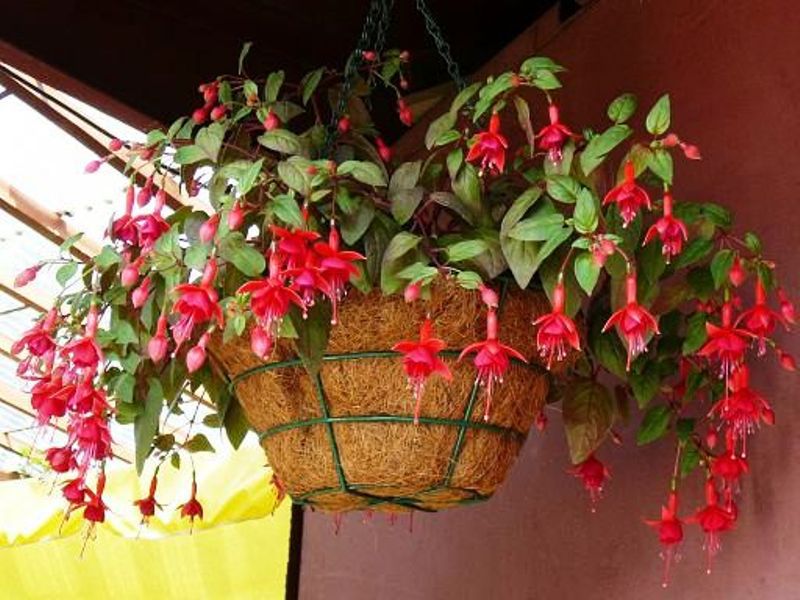

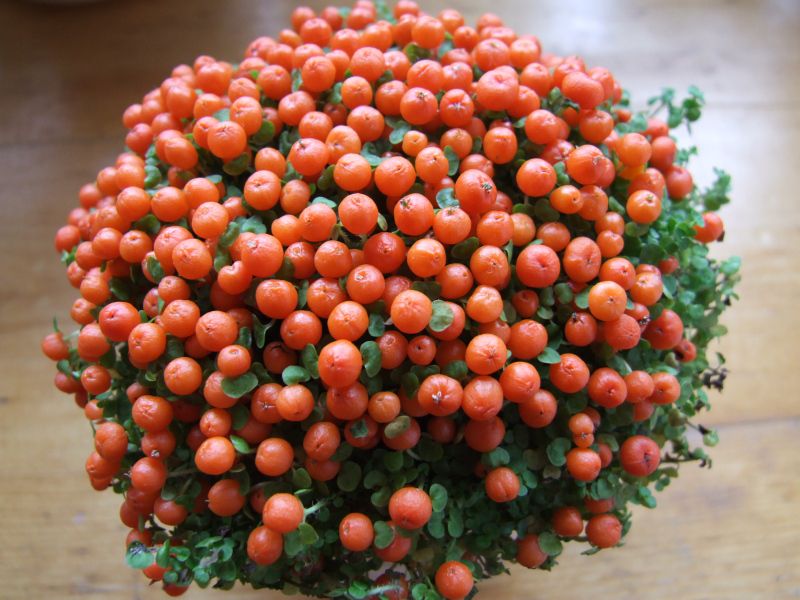



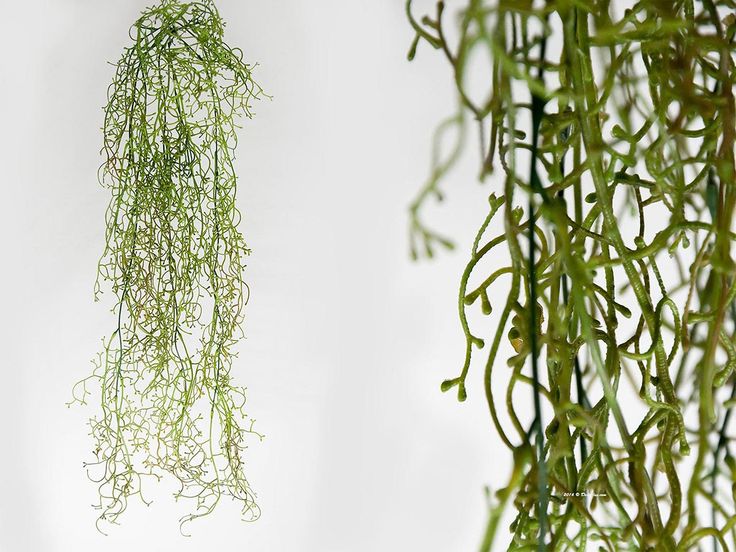
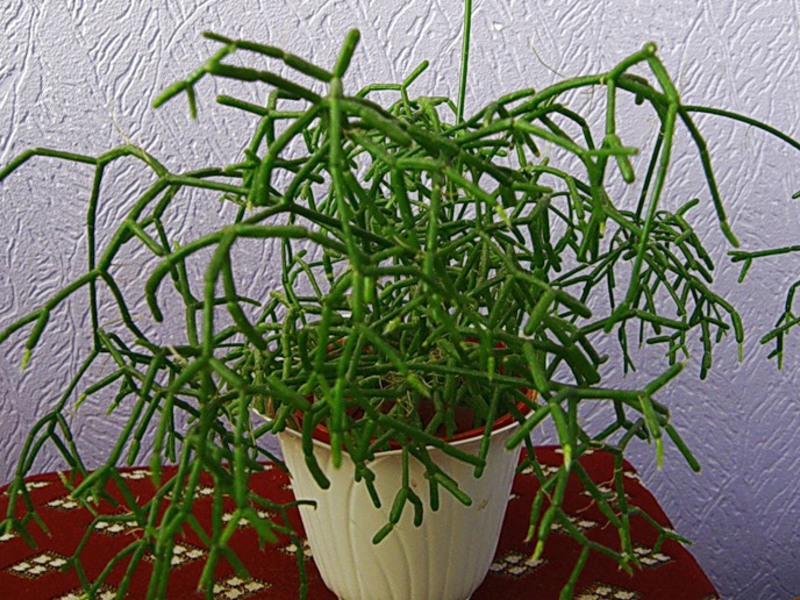
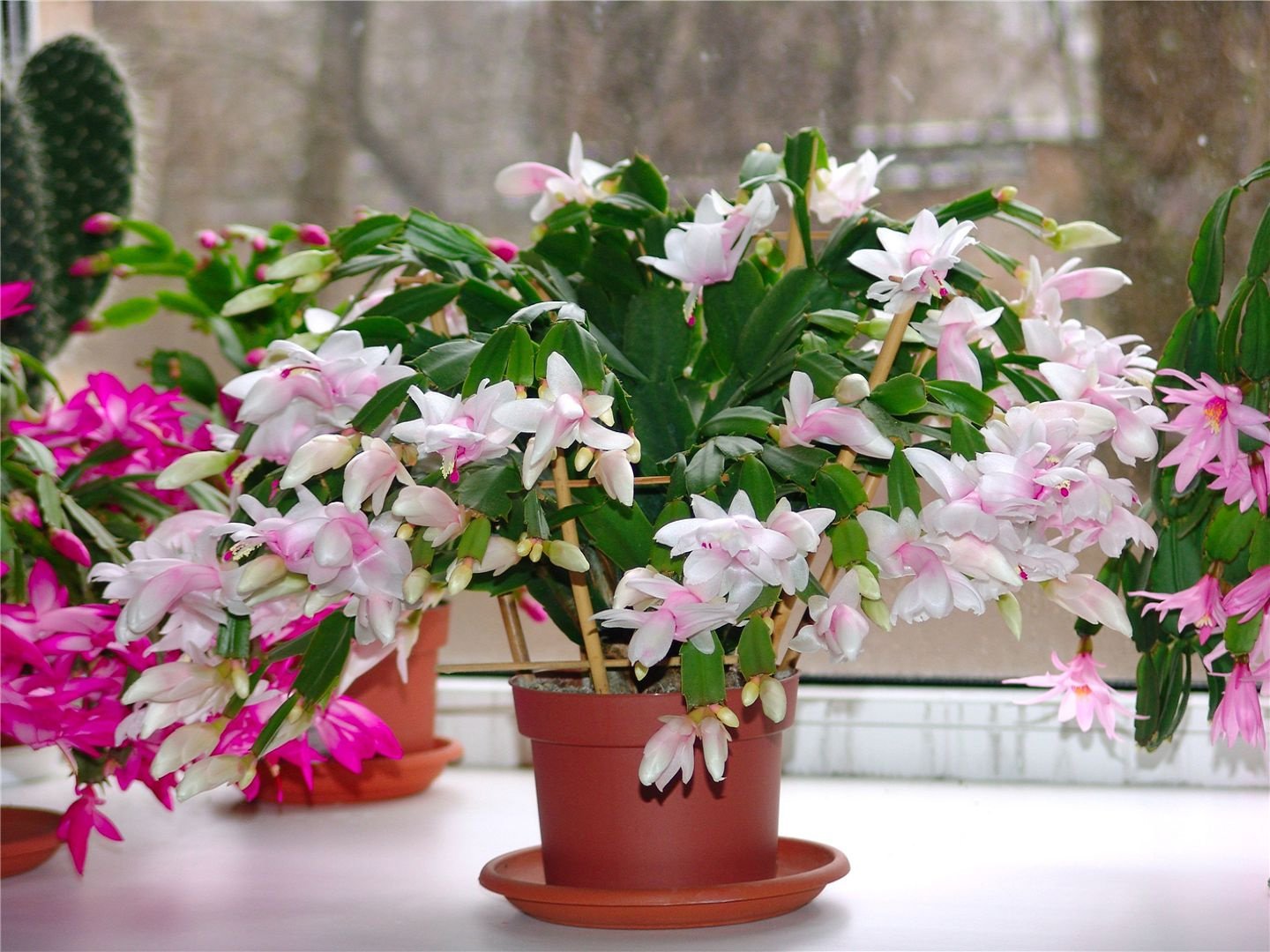
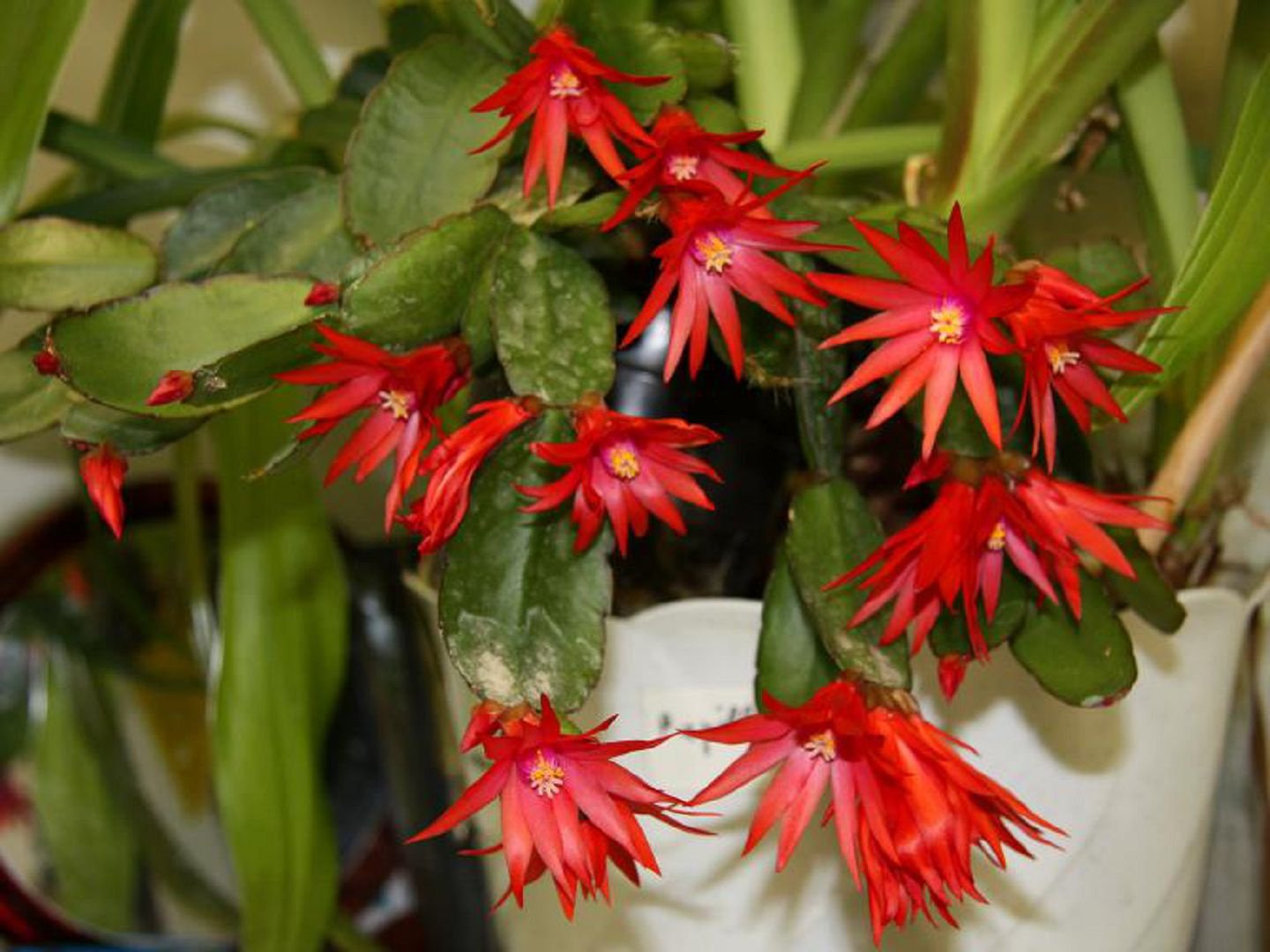
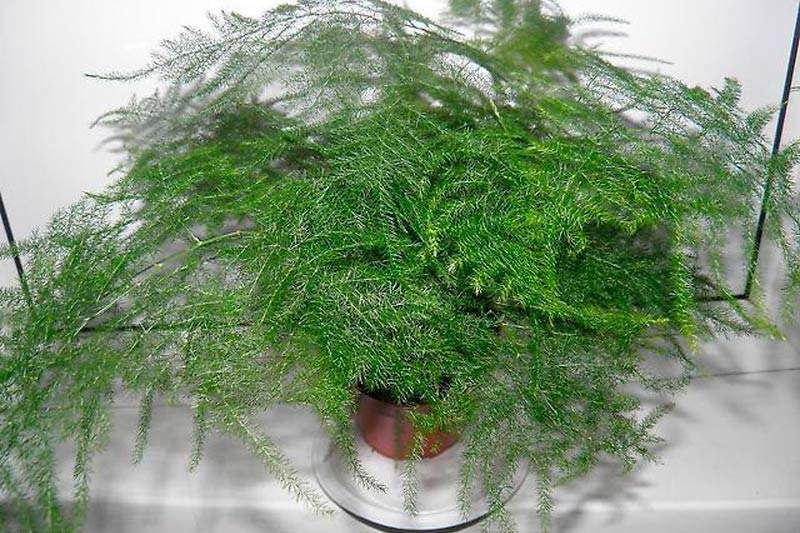
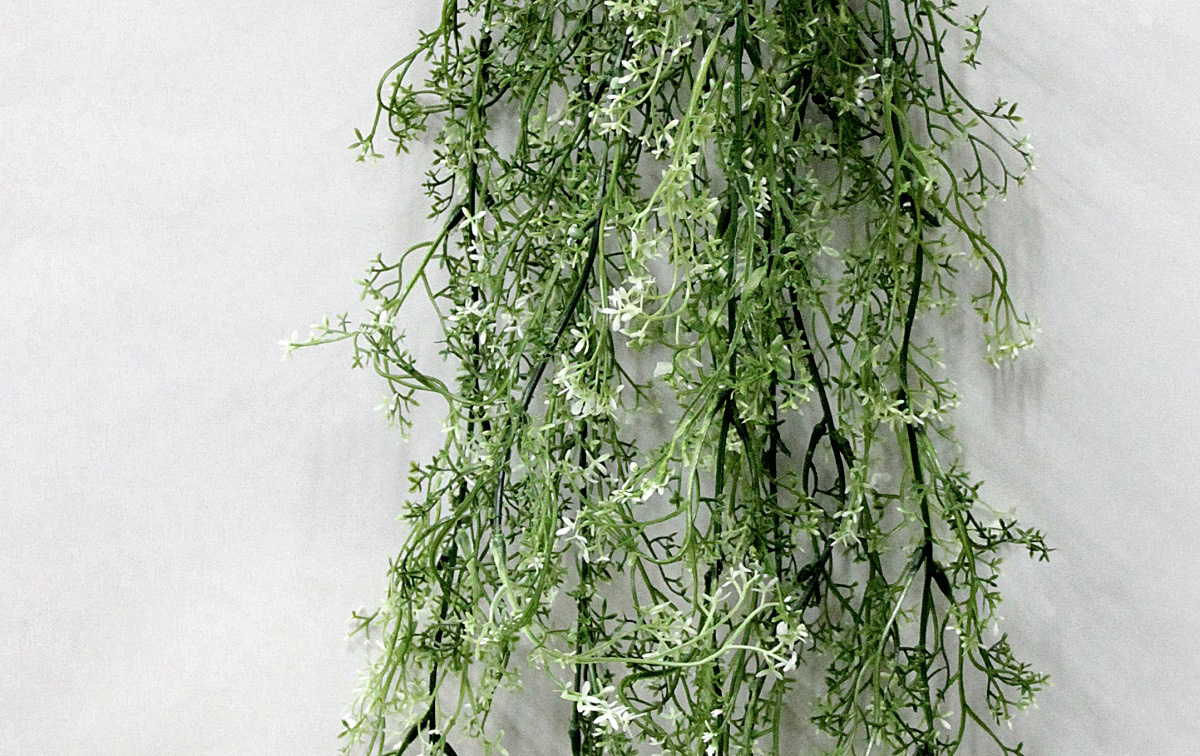
 Sow in the ground, without seedlings: 10 beautiful and unpretentious flowers
Sow in the ground, without seedlings: 10 beautiful and unpretentious flowers Platicodon planting and outdoor care
Platicodon planting and outdoor care Hosta - planting and care in the open ground in the Urals
Hosta - planting and care in the open ground in the Urals Oleander - care and growing at home
Oleander - care and growing at home